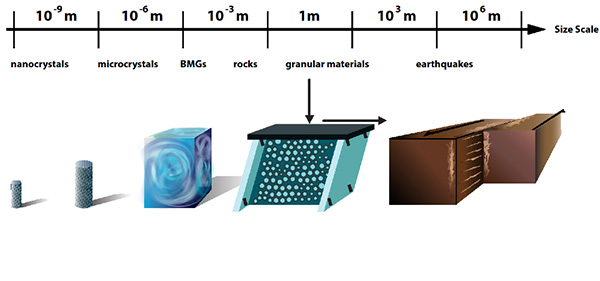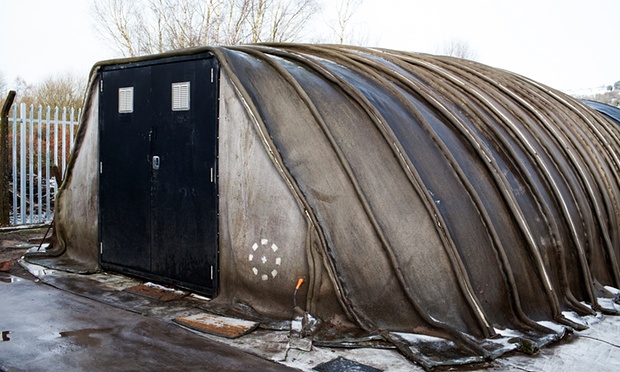On the heels of yesterday’s When the rocks sing “I got rhythm” (my December 18, 2023 posting), I received (via email) a media notice/reminder/update about a Northwestern University (Chicago, Illinois, US) app that allows you to listen,
From the original November 16, 2023 Northwestern University news release by Amanda Morris (also published as a November 16, 2023 news item on phys.org),
As seismic activity intensifies ahead of an impending eruption of a fissure near Iceland’s Fagradalsfjall volcano, the island’s Reykjanes Peninsula is experiencing hundreds of earthquakes per day.
Now, listeners can follow along through Northwestern University’s Earthtunes app. Developed in 2019, the app transforms seismic frequencies into audible pitches. Whereas a classic seismometer records motions in the Earth’s surface as squiggly lines scratched across a page, Earthtunes enables users to hear, rather than see, activity.
So far, Iceland’s recent, ongoing seismic activity sounds like a jarring symphony of doors slamming, hail pelting against a tin roof or window and people cracking trays of ice cubes.
By listening to activities recorded by the Global Seismographic Network station (named BORG), located to the north-northeast of Reykjavik, people can hear how the seismic activity has changed around the Fagradalsfjall area.
In this audio clip, listeners can hear 24 hours of activity recorded from Friday, Nov. 10, into Saturday, Nov. 11. Peppered with a cacophony of sharp knocking noises, it sounds like someone is insistently banging on a door.
“The activity is formidable, exciting and scary,” said Northwestern seismologist Suzan van der Lee, who co-developed Earthtunes. “Iceland did the right thing by evacuating residents in nearby Grindavik and the nearby Svartsengi geothermal power plant, one of the world’s oldest geothermal power plants, which was the first to combine electricity generation with hot water for heating in the region.”
Van der Lee is the Sarah Rebecca Roland Professor of Earth and Planetary Sciences at Northwestern’s Weinberg College of Arts and Sciences. In her research, she applies data science to millions of records of seismic waves in order to decode seismic signals, which harbor valuable information about the Earth’s interior dynamics.
As hundreds of earthquakes shake the ground, Van der Lee says the impending eruption is reminiscent of the 1973 eruption of Heimaey on Iceland’s Vestmannaeyjar archipelago.
“This level of danger is unprecedented for this area of Iceland, but not for Iceland as a whole,” said van der Lee, who hiked Fagradalsfjall in June. “While most Icelandic volcanoes erupt away from towns and other infrastructure, Icelanders share the terrible memory of an eruption 50 years ago on the island Vestmannaeyjar, during which lava covered part of that island’s town, Heimaey. The residents felt very vulnerable, as the evacuated people of Grindavik feel now. In a few days or weeks, they might no longer have their jobs, homes and most possessions, while still having to feed their families and pay their mortgages. However, partially resulting from that eruption on Vestmannaeyjar, Icelanders are well prepared for the current situation in the Fagradallsfjall-Svartsengi-Grindavik area.”
Accelerated audio
This audio clip presents the same data, with the pitch increased by 10 octaves. Listeners will hear a long, low rumbling sound, punctuated by an occasional slamming door.
“What you’re hearing is 24 hours of seismic data — filled with earthquake signals,” van der Lee said. “The vast majority of these quakes are associated with the magma intrusion into the crust of the Fagradallsfjall-Svartsengi-Grindavik area of the Reykjanes Peninsula. Seismic data are not audible; their frequencies are too low. So, the 24 hours of data are compressed into approximately 1.5 minutes of audio data. You can hear an unprecedented intensity of earthquakes during the night from last Friday into Saturday and related to a new magma intrusion into the crust area.”
In a third audio clip, the same data is less compressed, with the pitch increased by just seven octaves
“One can hear frequent earthquakes happening at this point,” van der Lee said. “Icelandic seismologists have been monitoring these quakes and their increasing vigor and changing patterns. They recognized similar patterns to earthquake swarms that preceded the 2021-2023 eruptions of the adjacent Fagradallsfjall volcano.”
Earthtunes is supported by the American Geophysical Union and Northwestern’s department of Earth and planetary sciences. Seismic data is obtained from the Earthscope Consortium. The app was designed and developed by van der Lee, Helio Tejedor, Melanie Marzen, Igor Eufrasio, Josephine Anderson, Liam Toney, Cooper Barth, Michael Ji and Leonicio Cabrera.
Jennifer Ouellette’s November 16, 2023 article for Ars Tecnica draws heavily from the news release while delving into the topic of data sonification (making sounds from data), Note: Links have been removed,
….
Sonification of scientific data is an area of growing interest in many different fields. For instance, several years ago, a project called LHCSound built a library of the “sounds” of a top quark jet and the Higgs boson, among others. The project hoped to develop sonification as a technique for analyzing the data from particle collisions so that physicists could “detect” subatomic particles by ear. Other scientists have mapped the molecular structure of proteins in spider silk threads onto musical theory to produce the “sound” of silk in hopes of establishing a radical new way to create designer proteins. And there’s a free app for Android called the Amino Acid Synthesizer that enables users to create their own protein “compositions” from the sounds of amino acids.
…
The December 19, 2023 Northwestern University media update points to the latest audio file of the eruption of the svartsengi-grindavik fissure in Iceland: 24 hours as of Monday, December 18, 2023 14:00:00 UTC.
Enjoy!
One last thing, there are a number of postings about data sonification here; many but not all scientists and/or communication practitioners think to include audio files.

